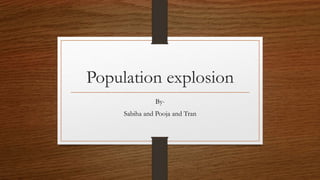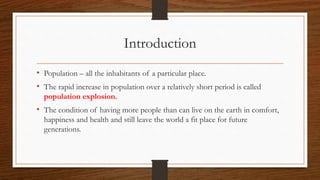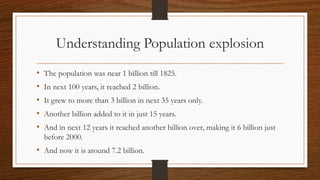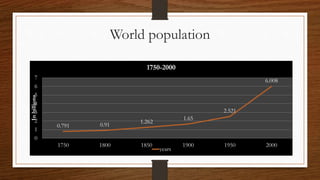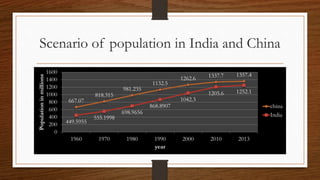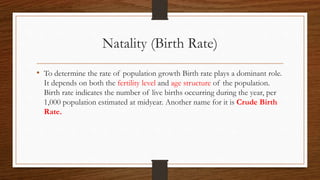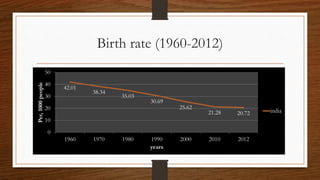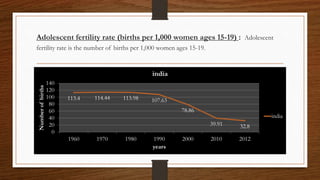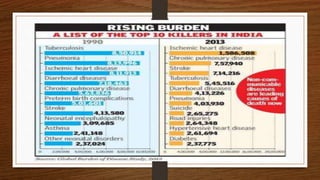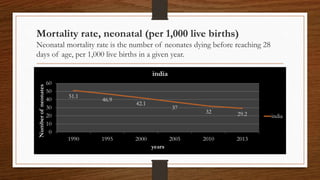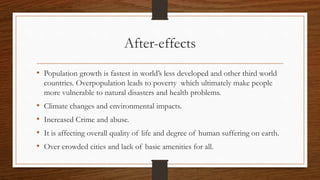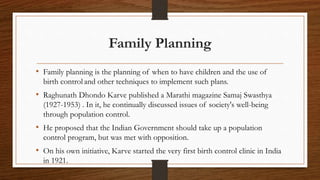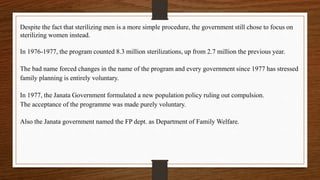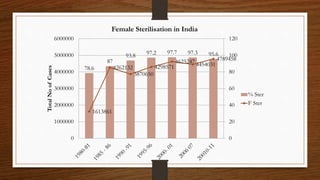The document discusses the phenomenon of population explosion, detailing historical population growth trends, particularly in India and China, and the factors influencing population dynamics. It highlights the impact of birth and death rates, immigration, and government family planning initiatives aimed at controlling growth while addressing issues like maternal and infant mortality. The evolving approaches to family planning in India, including voluntary programs, challenges of a two-child norm, and the social implications of overpopulation, are also explored.
